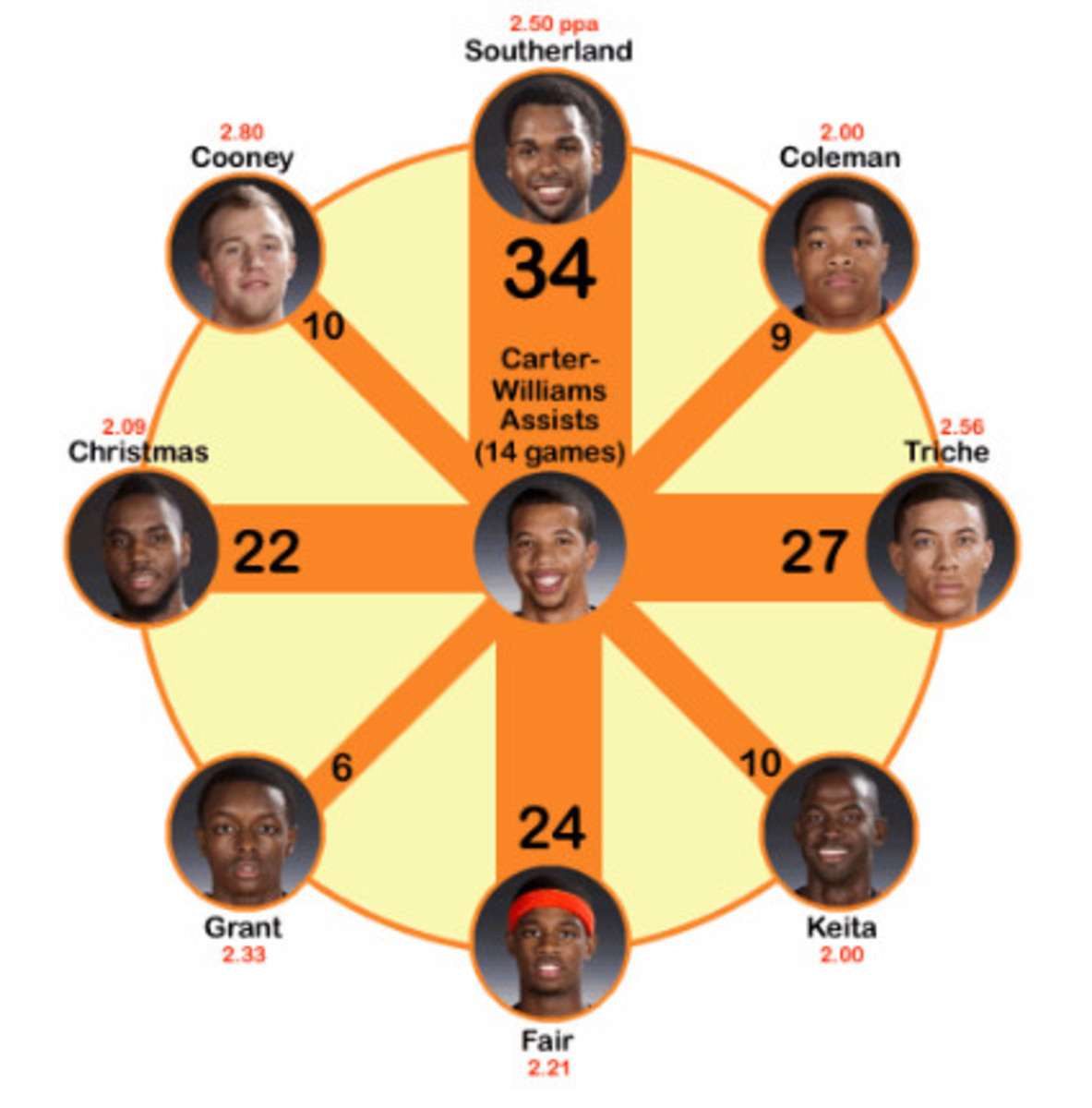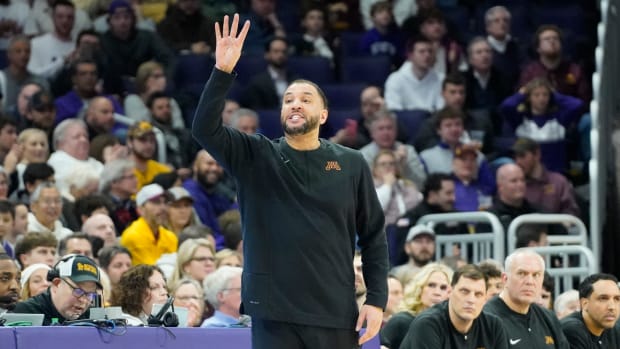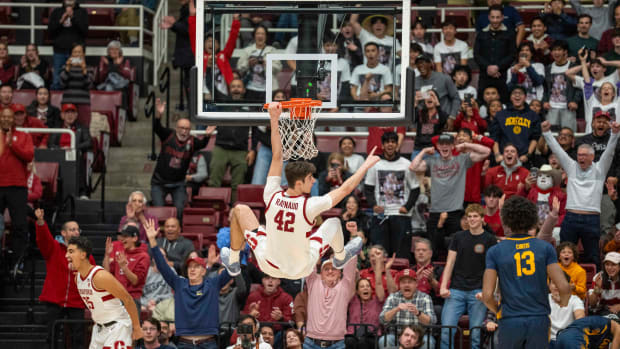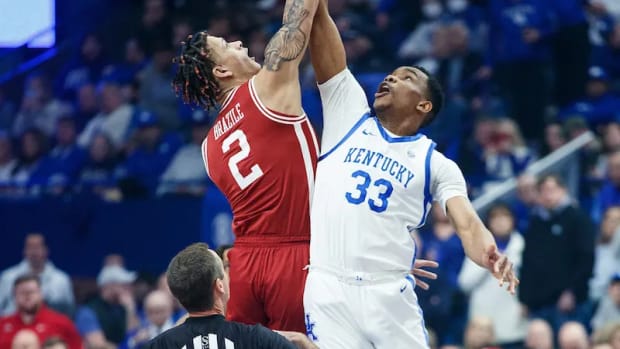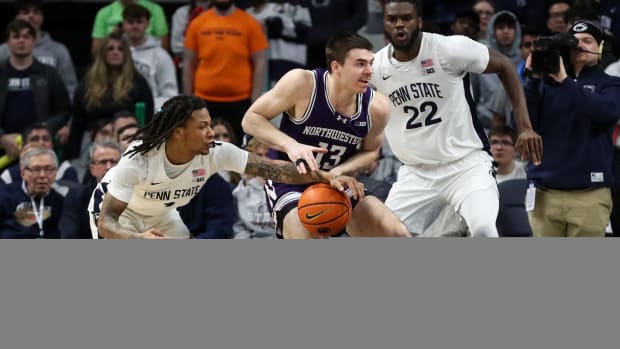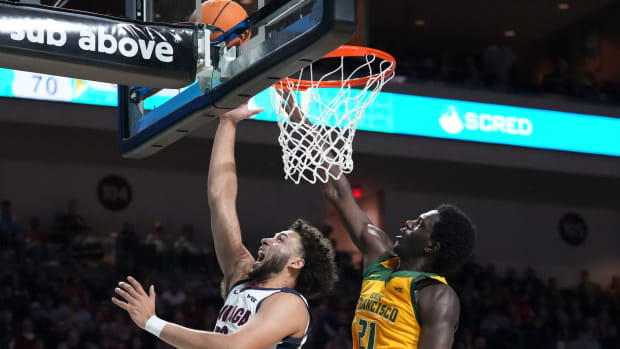Breaking down the assist king: Syracuse's Michael Carter-Williams
1. He's on a (somewhat) historic pace.
In 1987-88, a Southern University senior named Avery Johnson -- the same Avery Johnson who was just unceremoniously fired from his job as coach of the Brooklyn Nets -- set the NCAA Division I record for assists per game, at 13.3. That Johnson went undrafted is some indication of how lightly regarded his feat was at the time. The fact that he eventually thrived in the NBA and no one has come close to breaking his NCAA record in the 24 seasons that followed -- well, that should be some indication of how difficult it is to average 13.3 assists per game in college. Carter-Williams is averaging 10.14 this season, and there is no chance he'll surpass Johnson.
What Carter-Williams could do is top Kendall Marshall's record for assists per game by a major-conference player, which he set by dishing out 9.75 per game for North Carolina in 2011-12. This (lesser) record is within reach.
2. Carter-Williams' assist percentage is more interesting than his per-game average.
When Carter-Williams is on the floor, he's assisting on 50.5 percent of his teammates' field goals. Is that normal for a dominant point guard, you ask? Far from it. Only two point guards in the past 10 years have finished a season with an assist percentage above 50. Northeastern's Jose Juan Barea did it twice (while also using an insane 37.8 and 38.7 percent of his team's possessions), and Marquette's Travis Diener did it once (in an injury-shortened senior year).
This chart shows the top 10 assist rates from the past 10 seasons:
3. Carter-Williams is spreading the wealth (although James Southerland is getting a bigger share than his peers).
Four Orange players have at least 22 Carter-Williams-assisted buckets, as the following graphic shows. It has been updated through the Rutgers game; the red number above each player's name indicates the average value of those field goals.
4. The majority of his assists are on dunks and layups.
Seventy-four of Carter-Williams' 142 assists have created field goals at the rim, the main beneficiary being forward Rakeem Christmas, who has 17 assisted dunks/layups. In the graphic below, the pie chart shows the overall distribution of Carter-Williams' assists, and the table shows distribution by player. Triche, Southerland and Trevor Cooney are the trio that gets the majority of their assisted shots from beyond the arc.
5. Carter-Williams thrives on isolation drives.
While reviewing all 142 of his assists on film, I logged a lot of information beyond just the recipient and shot type, such as game situation and on what type of play the assist was created. I suspect that the volume of Carter-Williams' assists that come out of ball-screen situations -- just 17.6 percent -- is quite low for your typical, ball-dominant point guard. He does the majority of his work by getting isolated against his defender, blowing by him off the dribble (with long strides -- he's 6-foot-5), drawing defenders and then either dishing off for dunks/layups or kicking out for threes.
The chart at right shows the breakdown of assist types; 51.4 percent are either drive-and-dish or -kick. "Along perimeter" describes standard, around-the-perimeter passes for spot-up shots; "to cutter" means stand-still passes to teammates cutting to the rim (including alley-oops) or flashing into open areas; the others should be self-explanatory. What's surprising is just how infrequently Syracuse's offense features post feeds. They account for just 2.8 percent of Carter-Williams' assists.
6. It's a misconception that Carter-Williams has significantly increased the volume of Syracuse's assisted baskets. His real impact has been increasing the Orange's tempo.
Last season, with Scoop Jardine, Dion Waiters and Brandon Triche splitting the duties of point guard -- and receiving no major national attention for their distribution skills -- 56.1 percent of Syracuse's field goals were assisted. This season, it's pretty much the same: 58.2 percent of the Orange's baskets have been assisted. The difference is that the assists are all coming from one guy, rather than three.
In the table below, you'll see that the biggest change in Syracuse's attack isn't assist percentage or offensive efficiency, it's speed. They went from being slower than the D-I average to being a top-40 team in tempo.
The primary reason for this is that Carter-Williams relentlessly pushes the ball upcourt after opponents' missed shots or turnovers, and is adept at identifying quick-strike scoring opportunities. In a college hoops climate where most teams are wary of running, Carter-Williams' transition splits -- 37.3 percent of his assists come on the primary or secondary fastbreak -- are noteworthy. When he drives into the paint on the break, with a shooter on the wing and a drop-off option on the block, points are almost guaranteed.
